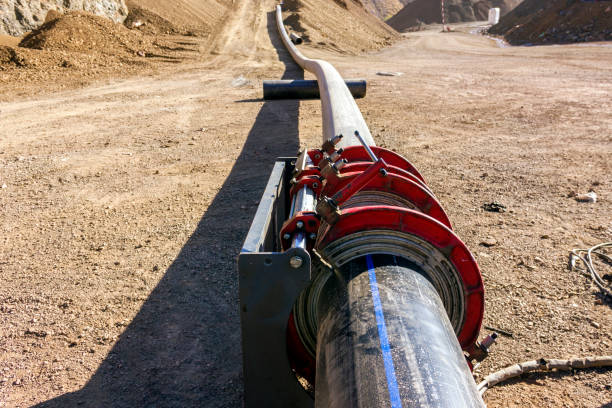Fusion welding is a technique widely used in various industries to join thermoplastics like polyethylene and polypropylene. But when it comes to PVC, or polyvinyl chloride, the question arises: Can you fusion weld PVC? The answer is nuanced and depends heavily on the type of PVC, the application, and the desired joint strength. This article explores the nature of PVC fusion welding, its feasibility, practical alternatives, and critical considerations for professionals and DIY enthusiasts alike.

Understanding PVC and Its Weldability
PVC is a rigid thermoplastic known for its chemical resistance, durability, and low cost. It comes in two primary forms: rigid (uPVC) and flexible (fPVC). The most commonly used in piping and construction is uPVC, which has a relatively high melting point and limited thermal flexibility compared to other thermoplastics.
Unlike materials like HDPE or PP, PVC has a narrower thermal processing window, meaning it does not soften and melt as uniformly. This property significantly affects its ability to be fusion welded, which relies on precise control of heat and pressure to create a homogenous bond.
Is Fusion Welding Technically Possible with PVC?
From a technical standpoint, fusion welding of PVC is possible, but it is not typically recommended in most commercial or industrial settings due to several inherent challenges:
Thermal Sensitivity: PVC degrades quickly when exposed to high temperatures, emitting hydrogen chloride gas. This degradation starts just above the softening point, which makes the fusion window very narrow.
Toxic Fumes: When overheated, PVC releases corrosive and hazardous gases, requiring excellent ventilation and personal protective equipment (PPE) during any thermal processing.
Inconsistent Weld Quality: Achieving a strong and uniform bond via fusion welding is difficult, especially when compared to solvent welding or mechanical joining methods.
That said, controlled hot gas welding or thermal fusion techniques can sometimes be used in laboratory or controlled manufacturing environments. This method typically involves a hot air gun or specialized welding equipment and requires skilled operators to avoid overheating or incomplete fusion.
Preferred Methods for Joining PVC
While fusion welding is not the standard for PVC, other reliable and efficient joining methods are commonly used:
Solvent Cement Welding
This is the most widely accepted and recommended method for joining rigid PVC pipes and fittings. The process involves applying a primer and solvent-based cement, which temporarily softens the surfaces of the PVC components. When joined and held in place, the plastic fuses at the molecular level as the solvent evaporates, creating a strong and permanent bond.
Advantages:
Simple and fast
No need for expensive equipment
Creates leak-proof joints
Ideal for plumbing, irrigation, and industrial fluid systems
Mechanical Couplings
For applications where disassembly or flexibility is required, mechanical joints such as rubber gaskets, threaded fittings, or compression couplings are excellent alternatives. These are commonly used in:
Municipal water supply systems
Temporary installations
Repair work on existing pipelines
Applications Where Fusion Welding Might Be Considered
Although not common, fusion welding PVC may be used in specialty plastic fabrication where other joining methods are not feasible, such as:
PVC sheet fabrication in ventilation or chemical handling systems
Custom tanks or enclosures
Certain laboratory or experimental setups
In these cases, hot air welding or extrusion welding may be employed, often using a plastic welding rod made of PVC. However, the process requires:
Controlled heating elements
Precise temperature monitoring
Skilled operators
Proper ventilation and PPE
Even in these cases, manufacturers often prefer fabrication-grade PVC, which has more predictable thermal behavior than standard uPVC piping materials.
Safety Considerations
One of the key reasons why fusion welding PVC is discouraged is due to safety risks:
Toxic Fumes: The release of chlorine-based gases can irritate eyes, skin, and respiratory tracts. Long-term exposure in poorly ventilated areas poses serious health risks.
Fire Hazard: PVC does not burn easily but will char and smolder when exposed to high heat. If combusted, it emits dense, corrosive smoke.
Environmental Impact: The degradation of PVC at high temperatures produces environmentally harmful byproducts, making waste handling a concern.
Always follow OSHA and local safety regulations when heating or processing PVC in any form.
Commercial and Industrial Context
In commercial environments—especially those involving plumbing, construction, or chemical processing—the goal is usually efficiency, reliability, and cost-effectiveness. Since fusion welding of PVC is costly, complex, and risk-prone, most professionals choose solvent welding or mechanical joining.
For businesses working with other thermoplastics like HDPE, fusion welding is the norm because of its clean melting and high joint integrity. But for PVC, industry standards have solidified around solvent bonding due to its simplicity and excellent long-term performance.
If your project specification explicitly demands thermal welding of PVC, consult with a professional plastic fabricator. They will assess the material type, thickness, and environmental conditions to determine if it's technically viable—and safe—to use fusion welding.
Conclusion
So, can you fusion weld PVC? Technically, yes—but it is not generally recommended outside of very specific and controlled use cases. The chemical properties of PVC make it unsuitable for typical fusion welding techniques, especially when compared to materials like polyethylene.
For most applications involving PVC pipes, fittings, or sheets, solvent welding is the preferred method due to its strength, reliability, and ease of use. Mechanical couplings offer additional flexibility for temporary or modular systems.
If you are considering fusion welding PVC, be sure to evaluate the risks, equipment requirements, and alternative joining methods. Always prioritize safety, cost-efficiency, and long-term performance, especially in commercial or critical infrastructure projects.
Ultimately, while fusion welding is a cornerstone technology in plastic joining, PVC remains an exception where traditional welding is rarely the optimal solution.


